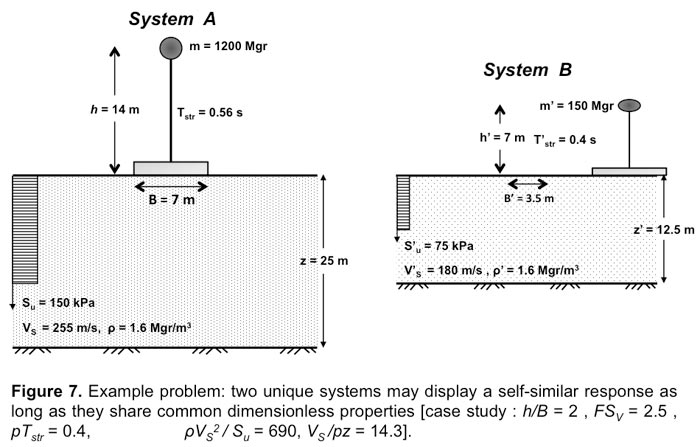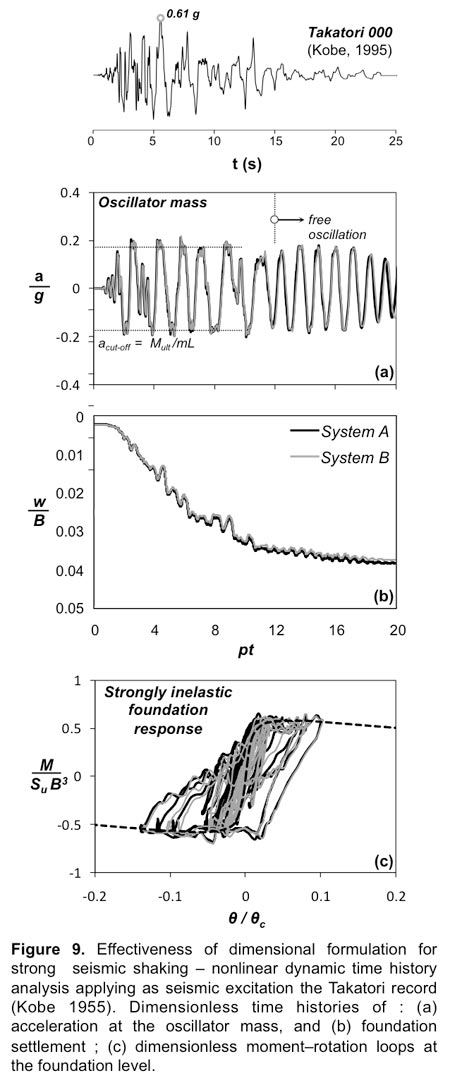Soil failure can be used for seismic protection of structures
Contrary to conventional capacity design, that ensures that plastic hinging is guided to the superstructure while the foundation behavior remains elastic, a new seismic design philosophy is introduced. According to this new philosophy, the nonlinear response of the foundation in terms of mobilization of soil bearing capacity, sliding and uplifting is encouraged. Allowed to rock, the foundation sets a limit on the inertia loading that may be transmitted onto the superstructure, acting as a means of seismic isolation.
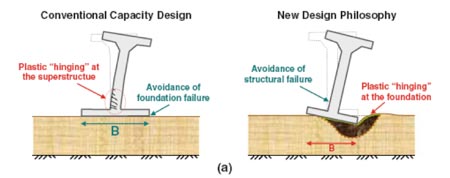
Simplified constitutive model for simulation of cyclic response of shallow foundations
However, the engineering community is not yet convinced on the applicability of such concepts in practice. A key prerequisite is the ability to realistically model such effects. Although several sophisticated constitutive models are readily available in the literature, their use in practice is limited, because : (i) they typically require extensive soil testing for calibration ; (ii) as they are implemented in highly specialized numerical codes, they are usually restricted to simple superstructures ; and (iii) in most cases, they can only be applied by numerical analysis specialists. Attempting to overcome some of these difficulties, the Lab developed a simplified but fairly comprehensive constitutive model for analysis of cyclic response of shallow foundations. Based on a kinematic hardening constitutive model with Von Mises failure criterion (readily available in commercial finite element codes), the model is made “pressure-sensitive” and capable of reproducing both the low-strain stiffness and the ultimate resistance of clays and sands.
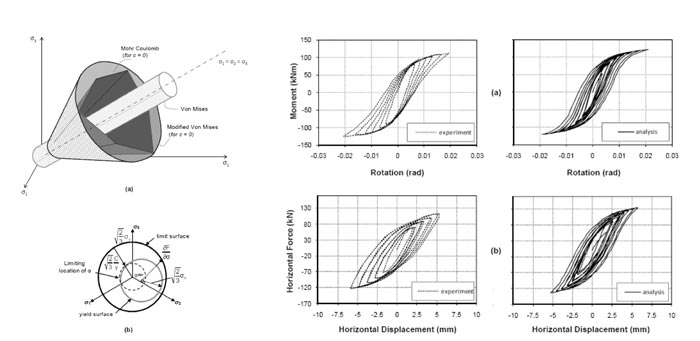
Analysis of rocking-isolated bridge pier
In order to unravel the beneficial role of foundation uplifting and the potential effectiveness of guiding the “plastic hinge” into the foundation soil by allowing mobilization of bearing capacity, analysis of a simple SDOF structure (bridge pier) is conducted. Comparison between the two alternative designs, conventional capacity design and rocking-isolation, is conducted, proving that the rocking-isolated system is remarkably resistant even to intense seismic loading, effectively reducing the inertia forces transmitted onto the superstructure. The only drawback though, seems to be the increase of the permanent settlement.
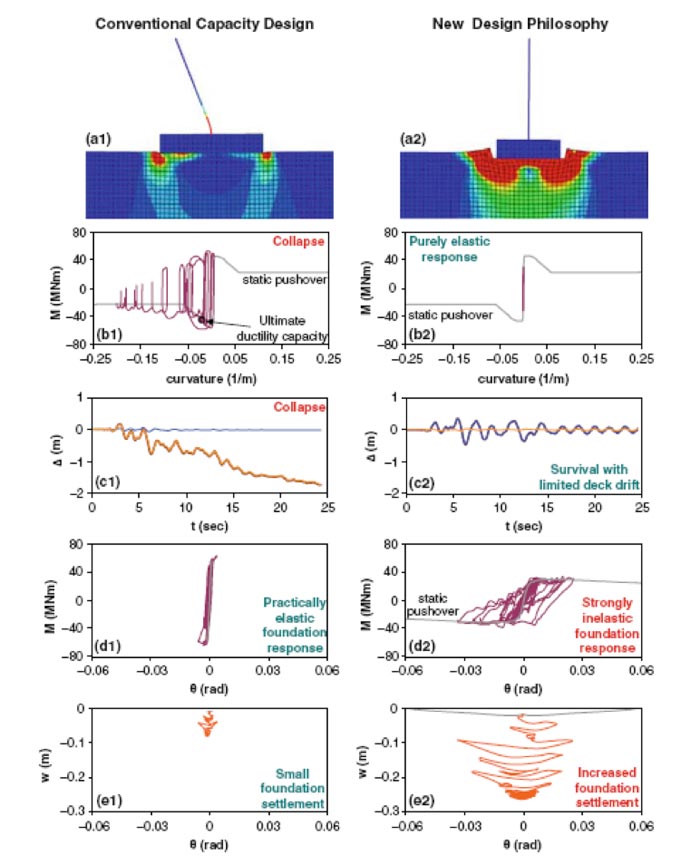
Rocking isolation of frame structures
Instead of the present practice of over-design, the foundations are intentionally under-designed to uplift and mobilize the strength of the supporting (stiff) soil, in the hope that they will thus act as a rocking−isolation mechanism, limiting the inertia transmitted to the superstructure, and guiding plastic “hinging” into soil and the foundation−soil interface. An idealized simple but realistic 1-bay 2-storey reinforced concrete (RC) moment resisting frame serves as an example to compare the two alternatives. The problem is analyzed employing the finite element (FE) method, taking account of material (soil and superstructure) and geometric (uplifting and P-Δ effects) nonlinearities. The response is first investigated through static pushover analysis. It is shown that the axial forces N acting on the footings and the moment to shear (M/Q) ratio fluctuate substantially during shaking, leading to significant changes in footing moment-rotation response. The seismic performance is explored through dynamic time history analyses, using a wide range of un-scaled seismic records as excitation.
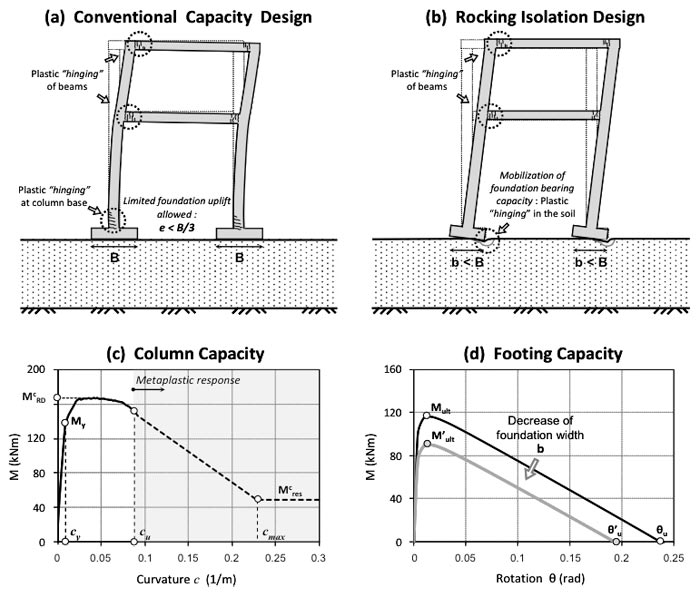

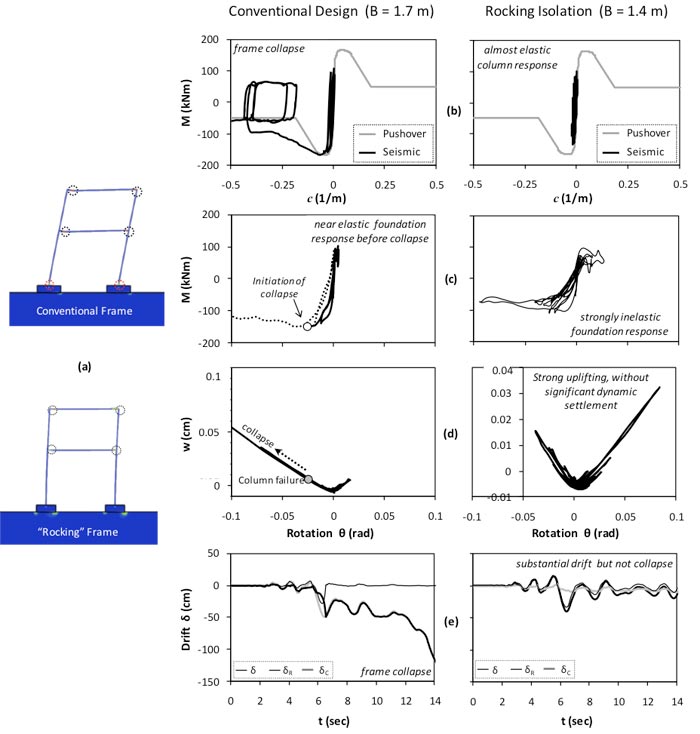

Simplified design against toppling collapse
After investigating the margins of safety against toppling collapse, a simplified procedure is developed to estimate the minimum acceptable footing width Bmin , without recourse to sophisticated (and time consuming) numerical analyses. It is shown that adequate margins of safety against toppling collapse may be achieved, if the toppling displacement capacity of the frame δtopl (i.e. the maximum horizontal displacement that does not provoke toppling) is sufficiently larger than the seismic demand δdem . With respect to the capacity, the use of an appropriate “equivalent” rigid-body is suggested, and shown to yield a conservative estimate of δtopl . The demand is estimated on the basis of the displacement spectrum, and the peak spectral displacement SDmax is proposed as a conservative measure of δdem. The validity and limitations of such approximation are investigated for a rigid-block on rigid-base, utilizing rigorous analytical solutions from the bibliography ; and for the frame structure on nonlinear soil, by conducting comprehensive nonlinear dynamic time history analyses. In all cases examined, the simplified SDmax approach is shown to yield reasonably conservative estimates.
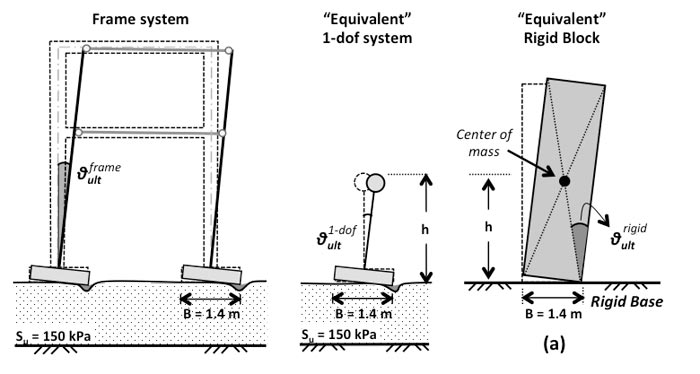
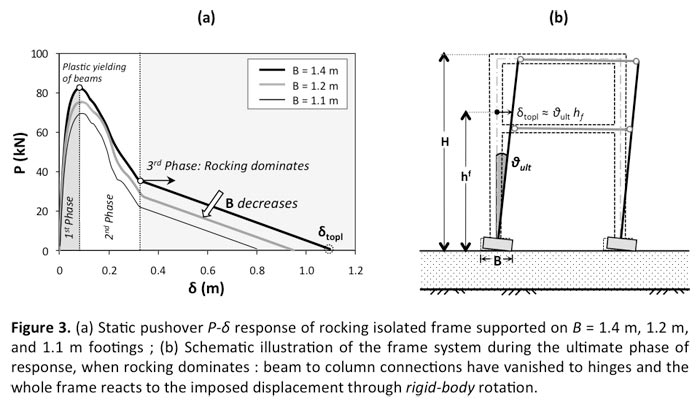
Rocking Isolation of Frames on Isolated Footings : Design Insights and Limitations
This paper : (a) sheds light in the possible limitations of rocking isolation, especially in view of the unavoidable uncertainties regarding the estimation of soil properties ; (b) investigates the potential detrimental effects of ground motion characteristics ; and (c) assesses the effectiveness of rocking isolation to more complex structures. It is shown that the concept may be generalized to 2-bay frames, and that even when foundation rocking is limited, the positive effect of foundation under-design remains, especially when it comes to very strong seismic shaking. In contrast, its effectiveness may be limited when the frame is subjected to combined horizontal and synchronous vertical acceleration components – a possible scenario on the surface of alluvial basins.
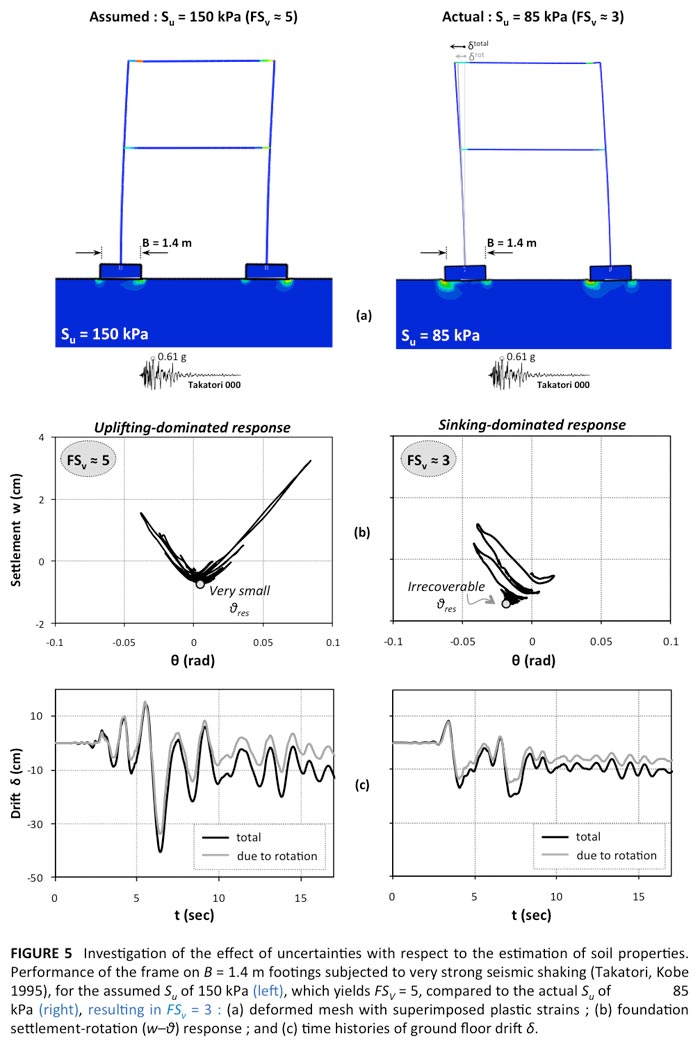
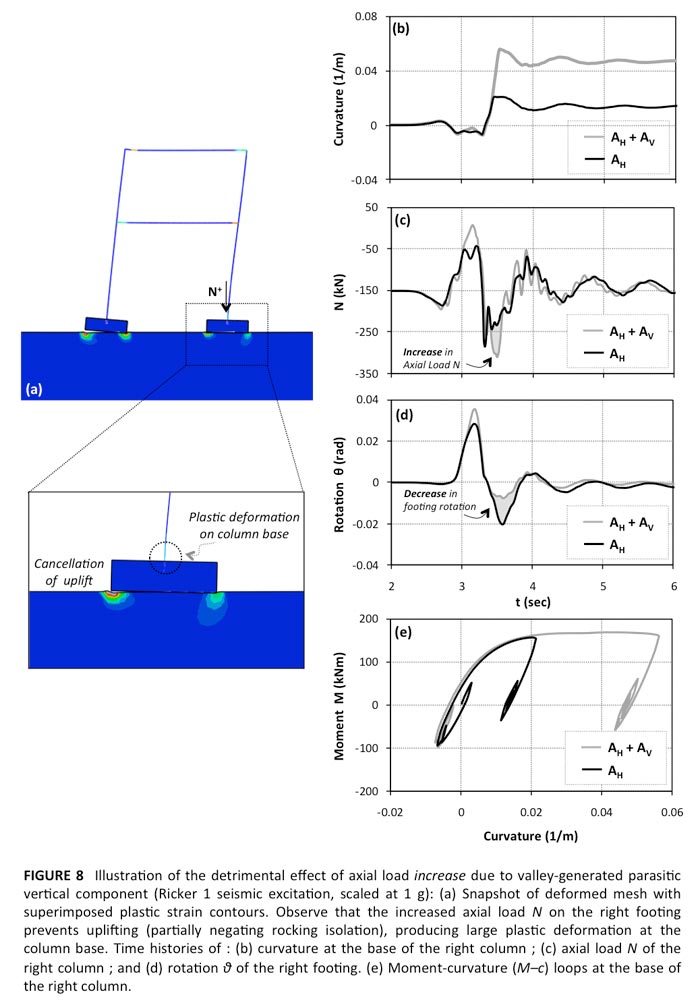
Dimensional Analysis of SDOF Systems Rocking on Inelastic Soil
This paper performs a dimensional analysis of SDOF system rocking on compliant soil, taking account of soil inelasticity, foundation uplifting, and P–δ effects in an attempt to derive results of generalized applicability and provide a generalization framework for future research on the subject,. The effectiveness of the proposed formulation, under static and dynamic conditions, is verified through numerical analyses of self-similar “equivalent” systems. Then, a parametric study is conducted to gain further insights on the key factors affecting the performance, with emphasis on metaplastic ductility and toppling rotation.
